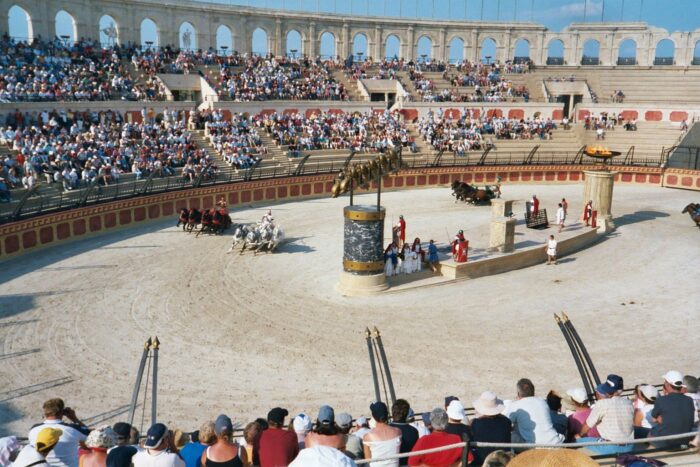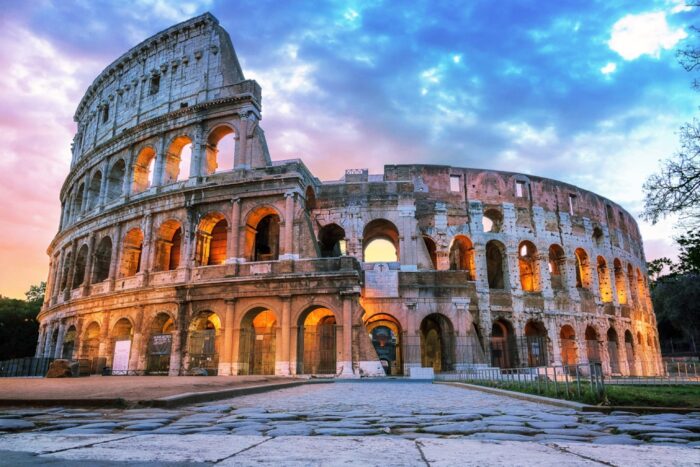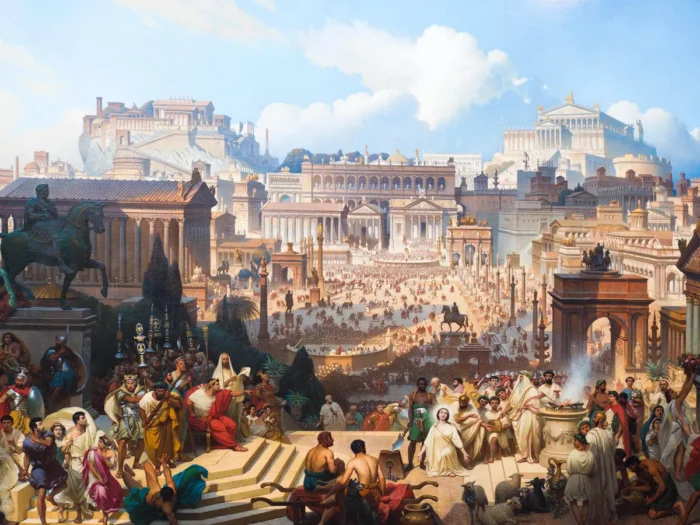Life in ancient Rome was extremely structured, as everyday activities were clearly divided into two parts. The first form consisted of affairs and included managerial tasks, military duties, and farming. The second part of the household was devoted to leisure, which included:
- creative endeavors, cultural conversations, and personal reflection
- enjoyment of the systematic accomplishment of life’s purpose
- recreation from work duties and responsibilities towards society
- the enjoyment of art and the manifestations of nature
Time of rest and relaxation often changed its form in the life of the Romans. Initially, leisure was devoted to holidays and the changing of the seasons. As the standard of living improved, the population in ancient Rome increased, which meant that more and more time was freed up for leisure. The improvement in living standards was clearly reflected in the wealthy segments of society. They were the first to experience individual leisure, which was not dedicated to important dates, but became a regular way to relax and recharge. Later, ordinary people had access to it. With the greatest enthusiasm, the inhabitants of ancient Rome met:
- active entertainment with the ball;
- table games and games of chance;
- exhibitions and public shows;
- musical performances;
- sports activities;
- dinner parties.
The choice of entertainment gives an excellent description of ancient Rome. The Romans were looking for practicality even in their methods of recreation. They were interested in cultural events, but not so much as in gladiatorial fights. The latter was in high demand because it allowed them to teach children, who were destined to become brave warriors, the brutality and realities of war. In their opinion, the theater could not bring any real benefit.
Popular Entertainment in Ancient Rome

Having slaves perform domestic tasks freed up a lot of time for high-status Romans. There were so many slaves in ancient Rome that ordinary residents with low incomes sometimes could not find work. To console such persons, the emperor fed them free of charge and provided them with spectacles. One form of entertainment for the poor and the nobility was public executions. Crowds of gawkers gathered in the central squares to watch the spectacular and brutal execution of criminals. On the part of the authorities, it was not only a show but also a way of showing what would happen to citizens who resisted the law and decided to overthrow the government. Still, this was not the only entertainment that was in demand among the public of ancient Rome.
| Chariot races | A favorite entertainment of the inhabitants of ancient Rome was held in the circus or hippodrome. Four teams consisted of carriers who drove harnesses. It was possible to distinguish the participants by their color. The spectacle was extremely exciting, but no less dangerous. The racing chariot was able to rapidly increase speed, causing the carriers of different teams collided, fell and said goodbye to life. |
| Gladiatorial fights | Many of us know about this entertainment from the school history course. Gladiator fights are the first association that arises when we mention ancient Rome. Criminals or slaves went out to fight to the delight of the spectators, or else they had a guaranteed death. The gladiators could have different weapons in their hands, which determined the only way to defeat the opponent.
If both gladiators remained alive after the fight, it was up to the spectators to decide whether to preserve their lives or not. In today’s world, such fights seem incredibly cruel, but in ancient Rome, they attracted huge crowds in amphitheaters and stadiums. |
| Animals in the Arena | Watching the animals also brought considerable pleasure to the Romans. Such games in arenas could go on all day long to entertain the crowds. Rhinos, bears, lions, and elephants were let into the arena. The animals could fight each other, and if that did not happen, criminals or hunters entered the arena. |
| Thermae | Antique baths were an essential attribute of Roman culture. Such structures were instantly erected even in places of temporary settlement. Thermae were considered sports, public and recreational institutions. As a rule, they included dozens of buildings with individual features. Wealthy people could afford to erect a personal complex of baths. |
| Theater | Theater was not the most popular form of leisure, but was also in demand. Most of the performances were copied from the Greek repertoire. People could arrange their own theater to show themselves and gain popularity. Comedies attracted the greatest number of spectators. |
| Triumphs | The festive procession dedicated to the military victory was a memorable moment for every resident of ancient Rome. A general passed through the Via Sacra, whose army held the conquered riches and other attributes of victory. Ordinary people gathered to celebrate with everyone else and, afterward, to watch an entertaining show and take part in games. The Roman triumphal arches under which the generals passed are still preserved in Rome as well as other cities. |
The cruelty and gloominess of that time did not prevent the Roman population from enjoying life. People knew how to occupy themselves, including gambling. Modern people do not mind to take a risk for money and feel the rush of adrenaline in their blood. The Red Stag casino working under license has prepared bonuses and quality service, especially for them. Casino games are available to users with different levels of finances, just as in ancient Rome.
Differences in income among the Romans changed the quality, but not the quantity of entertainment. Part of the day was devoted to work, and the rest of the time was spent at leisure. The urban population knew how to relax so they could perform their official tasks in the morning with renewed energy. The entertainment of the modern world is not much different, the main difference lies in the greater humanity of society.
How and Where the Ancient Romans Had Fun?

The love of noisy, mass entertainment perfectly characterizes the people of the Roman empire. Chariot races and gladiatorial fights took place very often. This did not prevent finding time for gambling and board games, conversations in the parks, and walks in the gardens. Visiting the theater during the Roman Republic led to tears, as dramas were in demand. A little later, in the Roman Empire, there was a demand for comedies. Children also found something to occupy themselves with: they played puppets, rode on swings, and flew kites.
Most entertainments in ancient Rome took place in several public places:
- The Colosseum, a famous theater whose arena was suitable for theatrical performances, gladiatorial battles, naval battles, and plays;
- Theatre of Marcellus – an ancient theater that gathered theater lovers on its benches;
- Domitian’s Stadium, a circus, and stadium for chariot races;
- The Tiber, a river for bathing and swimming;
- Campus Martius – a space that is popular among connoisseurs of ball fun, fitness, and running;
- the Roman baths – people not only bathed in them, but also communicated, played board games, and read literary works.
Leisure activities in the Roman Empire were not limited to Rome; amphitheaters were also built outside the city limits. The Romans understood that recreation is important, so they created comfortable conditions for leisure. In today’s rhythm of life, you should not put off vacationing for the holidays, either. it will explain the importance of quality breaks between work tasks. Take an example from the citizens of ancient Rome. Do light workouts, go to the pool, attend cultural events, enjoy classic and modern literature, and socialize with others.

